- Home
- Dean Koontz
Saint Odd
Saint Odd Read online
Saint Odd is a work of fiction. Names, characters, places, and incidents are the products of the author’s imagination or are used fictitiously. Any resemblance to actual events, locales, or persons, living or dead, is entirely coincidental.
Copyright © 2015 by Dean Koontz
All rights reserved.
Published in the United States by Bantam Books, an imprint of Random House, a division of Random House LLC, a Penguin Random House Company, New York.
Title page art from an original photograph by Luis Brito
A signed, limited edition has been privately printed by Charnel House.
Charnelhouse.com
BANTAM BOOKS and the HOUSE colophon are registered trademarks of Random House LLC.
LIBRARY OF CONGRESS CATALOGING-IN-PUBLICATION DATA
Koontz, Dean R. (Dean Ray)
Saint Odd : an Odd Thomas novel / Dean Koontz.
pages; cm.—(Odd Thomas)
ISBN 978-0-345-54587-9 (hardcover : acid-free paper)
ISBN 978-0-345-54588-6 (eBook)
1. Thomas, Odd (Fictitious character)—Fiction. 2. Cooks—
Fiction. 3. Mediums—Fiction. I. Title.
PS3561.O55S25 2015
813′.54—dc23
2014038145
www.bantamdell.com
Jacket design: Scott Biel
Jacket image (man): © Claudio Marinesco
v3.1
Contents
Cover
Title Page
Copyright
Epigraph
Chapter One
Chapter Two
Chapter Three
Chapter Four
Chapter Five
Chapter Six
Chapter Seven
Chapter Eight
Chapter Nine
Chapter Ten
Chapter Eleven
Chapter Twelve
Chapter Thirteen
Chapter Fourteen
Chapter Fifteen
Chapter Sixteen
Chapter Seventeen
Chapter Eighteen
Chapter Nineteen
Chapter Twenty
Chapter Twenty-one
Chapter Twenty-two
Chapter Twenty-three
Chapter Twenty-four
Chapter Twenty-five
Chapter Twenty-six
Chapter Twenty-seven
Chapter Twenty-eight
Chapter Twenty-nine
Chapter Thirty
Chapter Thirty-one
Chapter Thirty-two
Chapter Thirty-three
Chapter Thirty-four
Chapter Thirty-five
Chapter Thirty-six
Chapter Thirty-seven
Chapter Thirty-eight
Chapter Thirty-nine
Chapter Forty
Chapter Forty-one
Chapter Forty-two
Chapter Forty-three
Chapter Forty-four
Chapter Forty-five
Chapter Forty-six
Chapter Forty-seven
Chapter Forty-eight
Chapter Forty-nine
Chapter Fifty
Chapter Fifty-one
Chapter Fifty-two
Chapter Fifty-three
Dedication
Other Books by This Author
About the Author
The only wisdom we can hope to acquire
Is the wisdom of humility.…
—T. S. Eliot, East Coker
Saint Odd
One
Alone in the vastness of the Mojave, at two o’clock in the morning, racing along at seventy miles per hour, I felt safe and believed that whatever terror might await me was yet many miles ahead. This would not be the first time in my strange life that safety proved to be an illusion.
I have a tendency to hope always for the best, even when I’m being strangled with a little girl’s jump rope knotted around my neck by an angry, three-hundred-pound Samoan wrestler. In fact, I got out of that difficult situation alive, primarily by getting hold of his beloved porkpie hat, which he considered the source of his good luck. When I spun the hat like a Frisbee and he let go of the jump rope to try to snatch his chapeau from the air, I was able to pick up a croquet mallet and surprise him with a blow to the genitals, which was especially effective because he was wearing only a thong. Always hoping for the best has generally served me well.
Anyway, under a full moon, the desert was as eerie as a landscape on an alien planet. The great black serpent of highway undulated over a series of low rises and gentle downslopes, through sand flats that glowed faintly, as if radioactive, past sudden thrusting formations of rock threaded through in places with quartzite or something else that caught the Big Dog motorcycle’s headlights and flared like veins of fire.
In spite of the big moon and the bike’s three blazing eyes, the Mojave gathered darkness across its breadth. Half-revealed, gnarled shapes of mesquite and scatterings of other spiky plants bristled and seemed to leap forward as I flew past them, as if they were quick and hostile animals.
With its wide-swept fairing and saddlebags, the Big Dog Bulldog Bagger looked like it was made for suburban marrieds, but its fuel-injected, 111-cubic-inch V-twin motor offered all the speed anyone could want. When I had been on the interstate, before I had switched to this less-traveled state highway, a quick twist of the throttle shot me past whatever car or big rig was dawdling in front of me. Now I cruised at seventy, comfortable in the low deep-pocket seat, the rubber-mounted motor keeping the vibration to a minimum.
Although I wore goggles and a Head Trip carbon-fiber helmet that left my ears exposed, the shrieking wind and the Big Dog’s throaty exhaust roar masked the sound of the Cadillac Escalade that, running dark, came up behind me and announced itself with a blast of the horn. The driver switched on the headlights, which flashed in my mirrors, so that I had to glance over my shoulder to see that he was no more than fifty feet behind me. The SUV was a frightening behemoth at that distance, at that speed.
Repeated blasts of the horn suggested the driver might be drunk or high on drugs, and either gripped by road rage or in the mood for a sick little game of chicken. When he tooted shave-and-a-haircut-two-bits, he held the last note too long, and I assured myself that anyone who indulged in such a cliché and then even lacked the timing to pull it off could not be a dangerous adversary.
Earlier, I had learned that the Big Dog’s sweet spot was north of eighty miles an hour and that it was fully rideable at a hundred. I twisted the throttle, and the bike gobbled asphalt, leaving the Caddy behind. For the moment.
This wasn’t the height of bug season in the Mojave, so I didn’t have to eat any moths or hard-shelled beetles when I muttered unpleasantries. At that speed, however, because I sat tall and tense with my head above the low windshield, the warm night air chapped my lips and stung my cheeks as I bulleted into it.
Any responsible dermatologist would have chastised me for speeding barefaced through this arid wasteland. For many reasons, however, there was little chance that I would live to celebrate my twenty-third birthday, so looking prematurely aged two decades hence didn’t worry me.
This time I heard the Escalade coming, shrieking like some malevolent machine out of a Transformers movie, running dark once more. Sooner than I hoped, the driver switched on the headlights, which flared in my mirrors and washed the pavement around me.
Closer than fifty feet.
The SUV was obviously souped. This wasn’t an ordinary mama-takes-baby-to-the-playground Caddy. The engine sounded as if it had come out of General Motors by way of Boeing. If he intended to run me down and paste me to the Caddy’s grille—and evidently he did—I wouldn’t be able to outrace whatever customized engine made him king of the road.
&
nbsp; Having tricked up his vehicle with alternate, multi-tonal horns programmed with pieces of familiar tunes, he now taunted me with the high-volume song-title notes of Sonny and Cher’s “The Beat Goes On.”
The Big Dog boasted a six-speed transmission. The extra gear and the right-side drive pulley allowed better balance and greater control than would the average touring bike. The fat 250-millimeter rear tire gave me a sense of stability and the thirty-four-degree neck rake inspired the confidence to stunt a little even though I was approaching triple-digit speeds.
Now he serenaded me with the first seven notes of the Kingsmen’s “Louie Louie.” And then again.
My one advantage might be maneuverability. I slid lower in the seat, so that the arc of the windshield sent the wind over my helmet, and I made more aggressive use of the three-lane highway, executing wide serpentine movements from shoulder to shoulder. I was low to the ground, and the Escalade had a much higher center of gravity than the Big Dog; if the driver tried to stay on my tail, he might roll the SUV.
Supposing he was smart, he should realize that by not mimicking me, by continuing arrow-straight, he could rapidly gain ground as I serpentined. And with easy calculation, he could intersect me as I swooped from side to side of the road.
The third blast of “Louie Louie” assured me that either he wasn’t smart or he was so wasted that he might follow me into a pit of fire before he realized what he had done. Yet another programmed horn blared several notes, but I didn’t recognize the tune, though into my mind came the image of that all-but-forgotten rocker Boy George.
When brakes caterwauled, I glanced back to see the Escalade listing, its tires smoking, as the driver pulled the wheel hard to the right to avoid going off the north side of the pavement. Carving one S after another down the straightaway, I cornered out of the current curve, grateful for the Big Dog’s justly praised Balance Drive, and swooped into the next. With another squeal, the Caddy’s tires laid a skin of hot rubber on the blacktop as the driver pulled hard to the left. The vehicle nearly skidded off the south shoulder of the roadway, listing again but, as previously, righting itself well before it tipped over.
Resorting to his basic horn, the driver made no attempt at a tune this time, but let out blast after blast as if he thought he could sweep me off the bike with sound waves.
Recounting this, I might convey the impression that I remained calm and collected throughout the pursuit, but in fact I feared that, at any moment, I would regret not having worn an adult diaper.
In spite of whatever drugs or beverages had pushed the SUV driver’s CRAZY button and filled him with murderous rage, he retained just enough reason to realize that if he continued to follow my lead, he would roll the SUV. Arrowing down the center of the three lanes, he regained the ground that he’d lost, intending to intersect my bike between connecting curves of my flatland slalom.
The Big Dog Bulldog Bagger wasn’t meant to be a dirt bike. The diet that made it happy consisted of concrete and blacktop, and it wanted to be admired for its sleek aerodynamic lines and custom paint job and abundant chrome, not for its ruggedness and ability to slam through wild landscapes with aplomb.
Nevertheless, I went off-road. They say that necessity is the mother of invention, but it is also the grandmother of desperation. The highway was raised about two feet above the land through which it passed, and I left the shoulder at such speed that the bike was airborne for a moment before returning to the earth with a jolt that briefly lifted my butt off the seat and made my feet dance on the floorboards.
Hereabouts, the desert wasn’t a softscape of sand dunes and dead lakes of powdery silt, which was a good thing, because crossing ground like that, the Big Dog would have wallowed to a halt within a hundred yards. The land was mostly hard-packed by thousands of years of fierce sun and scouring winds, the igneous rocks rich with feldspar, treeless but in some places hospitable to purple sage and mesquite and scraggly plants less easily identified.
Jacked up on oversize tires, more suited to going overland than was my bike, the four-wheel-drive Escalade came off the highway in my wake. I intended to find a break in the land or an overhanging escarpment deep enough to conceal me, or a sudden spine of rock, anything I could use to get out of sight of my lunatic pursuer. After that, I would switch off my headlights, slow down significantly, travel by moonlight, and try as quickly as possible to put one turn in the land after another between me and him. Eventually I might find a place in which to shelter, shut off the bike, listen, and wait.
Suddenly a greater light flooded across the land, and when I looked back, I saw that the Escalade sported a roof rack of powerful spotlights that the driver had just now employed. The desert before me resembled a scene out of an early Steven Spielberg movie: a remote landing strip where excited and glamorous scientists from a secret government agency prepared to welcome a contingent of benign extraterrestrials and their mother ship. Instead of scientists and aliens, however, there was some inbred banjo player from Deliverance chasing me with bad intentions.
In those harsh and far-reaching streams of light, each humble twist of vegetation cast a long, inky shadow. The pale land was revealed as less irregular than I’d hoped, an apparent plain where I was no more likely to find a hiding place than I would a McDonald’s franchise complete with a playground for the tots.
Although my nature was to be optimistic, even cheerful, in the face of threat and gloom, there were times, like this, when I felt as though the entire world was death row and that my most recent meal had been my last one.
I continued north into the wilderness rather than angle back toward the highway, assuring myself that it wasn’t my destiny to die in this place, that I would find refuge ahead. My destiny was to die thirty miles or so from here, in the town of Pico Mundo, not tonight but tomorrow or the day after, or the day after that. Furthermore, I wouldn’t die by Cadillac Escalade; my end would be nothing as easy as that, nothing so quick and clean. Having argued myself into a fragile optimism, I sat up straight in my seat and smiled into the teeth of the warm night air.
As the SUV gained on me, the psycho driver resorted to one of his custom horns again. This time I recognized the title notes of “Karma Chameleon” by Culture Club, which had been fronted by Boy George. The song seemed so apt that I laughed; and my laughter would have buoyed me if it hadn’t sounded just a little insane.
The nitrogen-gas-charged shocks, the rubber-isolated floorboards, and the rubber handgrips all contributed to a smoother off-road ride than I had anticipated, but I expected that I was headed for one kind of mechanical failure or another, or for a collision with an unseen thrust of rock that would dismount me, or a community of rattlesnakes that, flung into the air in the midst of copulation, would rain down upon me, hissing.
I was suffering a brief remission in my characteristic optimism.
Ahead, a long but slight slope led to a narrow band of blackness before the Escalade’s lights revealed a swath of somewhat higher land that shimmered like a mirage. I couldn’t be sure what I was seeing; the sight was no less baffling than an abstract painting composed of geometric forms in pale beige and black, but in case it might be what I needed, I accelerated.
I had to weave among bushy clumps—a colony of pampas grass—that were half dead from too little water, their narrow five-foot recurved blades perhaps sharp enough to cut me, the numerous tall feathery panicles waving like white flags of surrender.
Evidently the nutcase pursuing me did not belong to the Sierra Club, because the Escalade barreled through the pampas grass without hesitation, leaving a path of crushed and shredded vegetation, gaining fast on me.
The ceaselessly repeated signature notes of “Karma Chameleon” and the roar of the SUV’s pumped-up engine were so loud, I knew that it must be close, maybe ten feet behind me. I didn’t dare glance back.
With but three or four seconds to make the right move, I saw that my suspicion about the terrain ahead was correct. I hung a hard right just before th
e brink.
The Big Dog fishtailed, the rear tire chewing away the lip of the abyss for a moment before it got traction.
Whether the driver’s attention suddenly shifted to the land ahead, whether he remained intently focused on me, in either case the Escalade had too much mass and momentum to come to a stop in time, and it was far less maneuverable than my bike. The wind of its passage swirled dust and dry bits of desert vegetation over me, and the big SUV launched off the rim of the ravine, still blaring “Karma Chameleon” as it briefly took flight.
With its four-piston billet calipers, the Big Dog could stop on a dollar if not a dime. I propped it with the kickstand and swung off and stood at the brink as the spotlight-equipped Caddy, now dropping nose-down like a bomb, illuminated its terminal destination.
Carved by millennia of flash floods and Mojave winds and seismic activity, the crevasse appeared to be about thirty feet wide at the top, less than ten at the bottom, about fifty feet deep. The plunging SUV tested the bedrock at the bottom, and the bedrock won. The last title note of the Culture Club tune came an instant before the crash of impact, the vehicle lights went out, and in the sudden darkness, the SUV shed pieces of itself, which rattled and clattered across the rocks.
I said, “Wow,” which isn’t witty enough for movie dialogue, but it’s what I said. I’m no Tom Cruise.
After a few seconds of darkness, the fire bloomed. It wasn’t an explosion, only low capering flames that quickly danced higher, brighter. The ravine proved to be a trap for tumbleweed that mounded along its bottom, and the spherical masses burst into flame faster to the west of the wreckage, apparently the direction in which gasoline spilled from the ruptured tank.
The walls of the ravine were steep but navigable on foot. The stone shaled away treacherously as I quickly sidled down with all the grace of—I don’t know why this unlikely image occurred to me at the time—a penguin on stilts. Too many years of watching old Warner Bros. cartoons by Chuck Jones can instill in you a silliness gene by proxy.
Perhaps equally silly—I was in my Good Samaritan mode. The driver had tried to kill me, sure, but his homicidal rage might have been the consequence of inebriation, and he might have been a peach of a guy when he was sober. I couldn’t let him bleed or burn to death just because of his idiocy behind the wheel of the SUV. Sometimes I am hampered by having a moral code, but I have it nonetheless, like a burr under the brain, with no way to pluck it out.

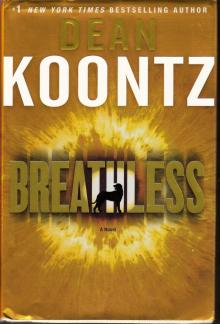 Breathless
Breathless Lightning
Lightning The Taking
The Taking The Door to December
The Door to December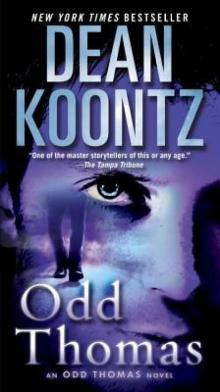 Odd Thomas
Odd Thomas Midnight
Midnight Whispers
Whispers Odd Interlude #2
Odd Interlude #2 The Mask
The Mask Watchers
Watchers By the Light of the Moon
By the Light of the Moon Night Chills
Night Chills Brother Odd
Brother Odd False Memory
False Memory The Darkest Evening of the Year
The Darkest Evening of the Year Life Expectancy
Life Expectancy The Good Guy
The Good Guy Hideaway
Hideaway Innocence
Innocence Your Heart Belongs to Me
Your Heart Belongs to Me Forever Odd
Forever Odd Intensity
Intensity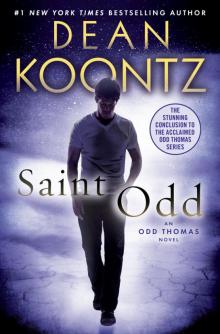 Saint Odd
Saint Odd Dragon Tears
Dragon Tears The Husband
The Husband Final Hour
Final Hour Demon Seed
Demon Seed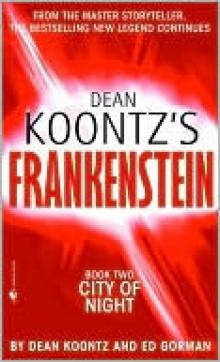 City of Night
City of Night From the Corner of His Eye
From the Corner of His Eye A Big Little Life: A Memoir of a Joyful Dog
A Big Little Life: A Memoir of a Joyful Dog Seize the Night
Seize the Night Winter Moon
Winter Moon Strange Highways
Strange Highways The Silent Corner
The Silent Corner Twilight Eyes
Twilight Eyes Velocity
Velocity The Bad Place
The Bad Place Cold Fire
Cold Fire The Whispering Room
The Whispering Room Ricochet Joe
Ricochet Joe The Crooked Staircase
The Crooked Staircase Tick Tock
Tick Tock The Face
The Face Sole Survivor
Sole Survivor Strangers
Strangers Deeply Odd
Deeply Odd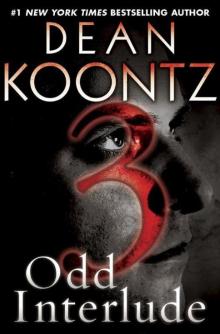 Odd Interlude #3
Odd Interlude #3 The Vision
The Vision Phantoms
Phantoms Prodigal Son
Prodigal Son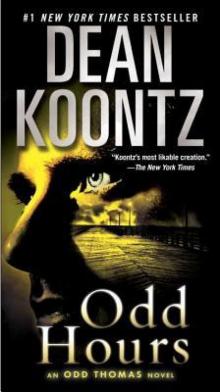 Odd Hours
Odd Hours Last Light
Last Light Fear Nothing
Fear Nothing Odd Interlude #1
Odd Interlude #1 One Door Away From Heaven
One Door Away From Heaven Koontz, Dean R. - Mr. Murder
Koontz, Dean R. - Mr. Murder The City
The City The Dead Town
The Dead Town The Voice of the Night
The Voice of the Night Dark Rivers of the Heart
Dark Rivers of the Heart The Key to Midnight
The Key to Midnight Lost Souls
Lost Souls Odd Thomas: You Are Destined To Be Together Forever
Odd Thomas: You Are Destined To Be Together Forever Odd Apocalypse
Odd Apocalypse Icebound
Icebound The Book of Counted Sorrows
The Book of Counted Sorrows The Neighbor
The Neighbor Ashley Bell
Ashley Bell Santa's Twin
Santa's Twin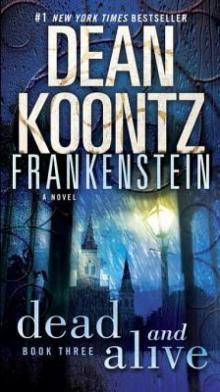 Dead and Alive
Dead and Alive The Eyes of Darkness
The Eyes of Darkness The Odd Thomas Series 4-Book Bundle
The Odd Thomas Series 4-Book Bundle Writing Popular Fiction
Writing Popular Fiction City of Night f-2
City of Night f-2 Dean Koontz's Frankenstein 4-Book Bundle
Dean Koontz's Frankenstein 4-Book Bundle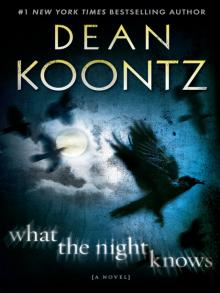 What the Night Knows: A Novel
What the Night Knows: A Novel Demon Child
Demon Child Starblood
Starblood Surrounded mt-2
Surrounded mt-2 Odd Interlude #3 (An Odd Thomas Story)
Odd Interlude #3 (An Odd Thomas Story)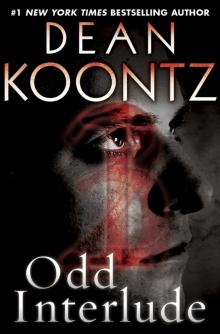 Odd Interlude
Odd Interlude The Odd Thomas Series 7-Book Bundle
The Odd Thomas Series 7-Book Bundle The City: A Novel
The City: A Novel Deeply Odd ot-7
Deeply Odd ot-7 Odd Interlude #1 (An Odd Thomas Story)
Odd Interlude #1 (An Odd Thomas Story) The House of Thunder
The House of Thunder Odd Interlude ot-5
Odd Interlude ot-5 Fear That Man
Fear That Man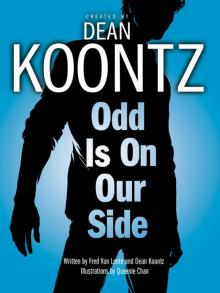 Odd Is on Our Side
Odd Is on Our Side Relentless
Relentless A Big Little Life
A Big Little Life Hanging On
Hanging On The Forbidden Door
The Forbidden Door Dragonfly
Dragonfly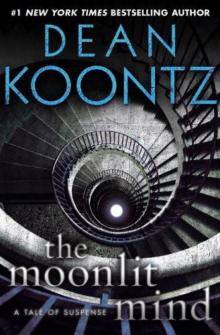 The Moonlit Mind: A Tale of Suspense
The Moonlit Mind: A Tale of Suspense Final Hour (Novella)
Final Hour (Novella) The Odd Thomas Series 4-Book Bundle: Odd Thomas, Forever Odd, Brother Odd, Odd Hours
The Odd Thomas Series 4-Book Bundle: Odd Thomas, Forever Odd, Brother Odd, Odd Hours Odd Interlude (Complete)
Odd Interlude (Complete)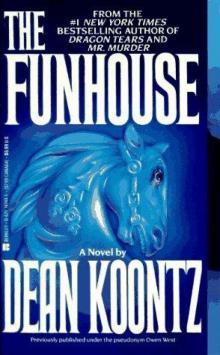 The Funhouse
The Funhouse 77 Shadow Street
77 Shadow Street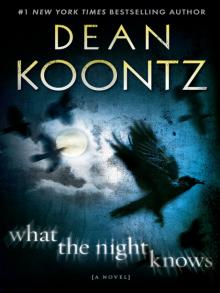 What the Night Knows
What the Night Knows Deeply Odd: An Odd Thomas Novel
Deeply Odd: An Odd Thomas Novel The Servants of Twilight
The Servants of Twilight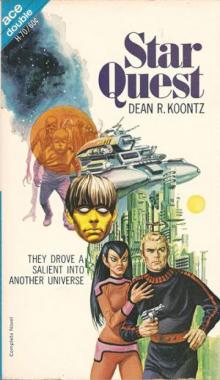 Star quest
Star quest Frankenstein Dead and Alive: A Novel
Frankenstein Dead and Alive: A Novel Chase
Chase Eyes of Darkness
Eyes of Darkness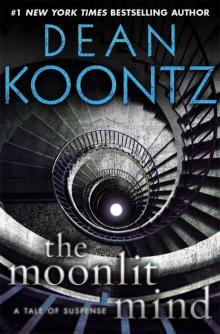 The Moonlit Mind: A Tale of Suspense (Kindle Single)
The Moonlit Mind: A Tale of Suspense (Kindle Single) Sussurri
Sussurri The Moonlit Mind (Novella)
The Moonlit Mind (Novella) Frankenstein: Lost Souls - A Novel
Frankenstein: Lost Souls - A Novel![Ricochet Joe [Kindle in Motion] (Kindle Single) Read online](http://i1.bookreadfree.com/i2/04/05/ricochet_joe_kindle_in_motion_kindle_single_preview.jpg) Ricochet Joe [Kindle in Motion] (Kindle Single)
Ricochet Joe [Kindle in Motion] (Kindle Single) Innocence: A Novel
Innocence: A Novel Beastchild
Beastchild A Darkness in My Soul
A Darkness in My Soul Oddkins: A Fable for All Ages
Oddkins: A Fable for All Ages The Frankenstein Series 5-Book Bundle
The Frankenstein Series 5-Book Bundle Frankenstein - City of Night
Frankenstein - City of Night Shadowfires
Shadowfires Last Light (Novella)
Last Light (Novella) Frankenstein - Prodigal Son
Frankenstein - Prodigal Son Ticktock
Ticktock Dance with the Devil
Dance with the Devil You Are Destined to Be Together Forever (Short Story)
You Are Destined to Be Together Forever (Short Story) The Moonlit Mind (Novella): A Tale of Suspense
The Moonlit Mind (Novella): A Tale of Suspense Darkness Under the Sun
Darkness Under the Sun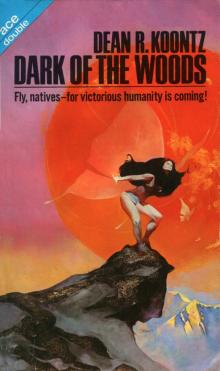 Dark Of The Woods
Dark Of The Woods Dean Koontz's Frankenstein
Dean Koontz's Frankenstein Frankenstein
Frankenstein The Face of Fear
The Face of Fear Children of the Storm
Children of the Storm Mr. Murder
Mr. Murder